
Aponotoreas is a genus of moths in the family Geometridae erected by Robin C. Craw in 1986.

Aponotoreas anthracias is a moth of the family Geometridae. It is endemic to New Zealand. This species was first described by Edward Meyrick in 1883 under the name Larentia anthracias. Specimens of this species have been collected in the Maungatua ranges, the Remarkables and the Hawkdun Ecological District in Otago. The host plant of this moth is Dracophyllum.

Aponotoreas incompta is a moth of the family Geometridae. It is endemic to New Zealand.
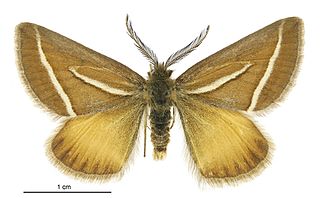
Aponotoreas insignis is a moth of the family Geometridae. It is endemic to New Zealand.
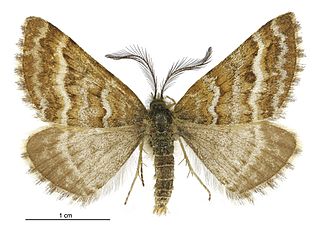
Aponotoreas villosa is a moth of the family Geometridae. It is endemic to New Zealand.

Arctesthes catapyrrha is a moth of the family Geometridae. It is endemic to New Zealand.

Arctesthes siris is a moth of the family Geometridae. It is endemic to New Zealand.
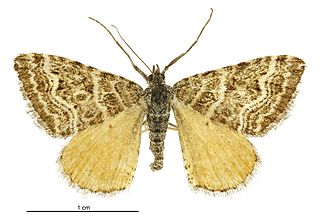
Xanthorhoe bulbulata is a species of moth in the family Geometridae. It is endemic to New Zealand. It is classified as critically endangered by the Department of Conservation.

Asaphodes cataphracta is a moth in the family Geometridae. It is endemic to New Zealand and is found in the South Island. This species prefers grassy or tussock covered mountain side slopes as habitat. The adults of this species are on the wing from December until March. The larvae of A. cataphracta is known to consume native mountain buttercups (Ranunculaceae).

Asaphodes chlamydota is a moth in the family Geometridae. It is endemic to New Zealand, and can be found in the lower part of the North Island and in the South Island. It inhabits native forest and shrublands. The larvae of this species feeds on native Clematis plants including Clematis afoliata. Adults are on the wing from November to April and are regarded as having intermedia flight powers.

Notoreas chioneres is a species of moth in the family Geometridae. This species is endemic to New Zealand.
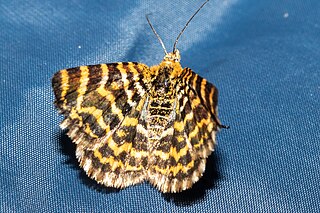
Notoreas galaxias is a species of moth in the family Geometridae. This species is endemic to New Zealand and has been observed in the southern half of the South Island. The species inhabits alpine herbfields and their larvae feed on species in the genera Kelleria and Drapetes. The adults are on the wing February to March.

Notoreas ischnocyma is a species of moth in the family Geometridae. This species is endemic to New Zealand. This species is found in Canterbury and Otago.

Notoreas mechanitis is a species of moth in the family Geometridae. It is endemic to New Zealand.

Notoreas niphocrena is a species of moth in the family Geometridae. It is endemic to New Zealand.
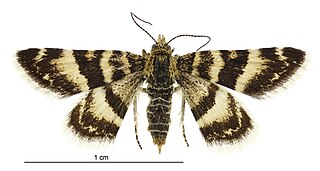
Notoreas ortholeuca is a species of moth in the family Geometridae. It is endemic to New Zealand.
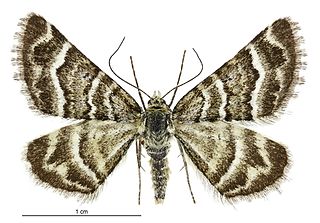
Notoreas paradelpha is a species of moth in the family Geometridae. It is endemic to New Zealand.

Notoreas perornata is a species of moth in the family Geometridae. It is endemic to New Zealand and is found in the North Island from Northland to Westland as well as in the South Island on the coast of Marlborough.

Asaphodes omichlias is a moth in the family Geometridae. It is endemic to New Zealand and has been observed in both the North and South Islands. This species inhabits rocky, open country in high mountains. Adults are on the wing in January and February. The appearance of the adult of this species is variable with some specimens having a paler and more grey appearance than the more usual brown appearance. Its colouration ensures it blends well with its preferred habitat rocky, open country in the high mountains.
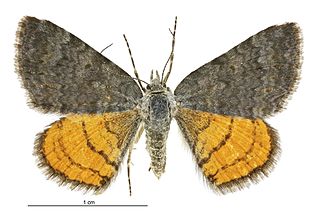
Paranotoreas zopyra is a species of moth in the family Geometridae. This species is endemic to New Zealand. This species was first described by Edward Meyrick in 1883 and named Pasithea zopyra. In 1986 Robin C. Craw placed this species within the genus Paranotoreas.





















